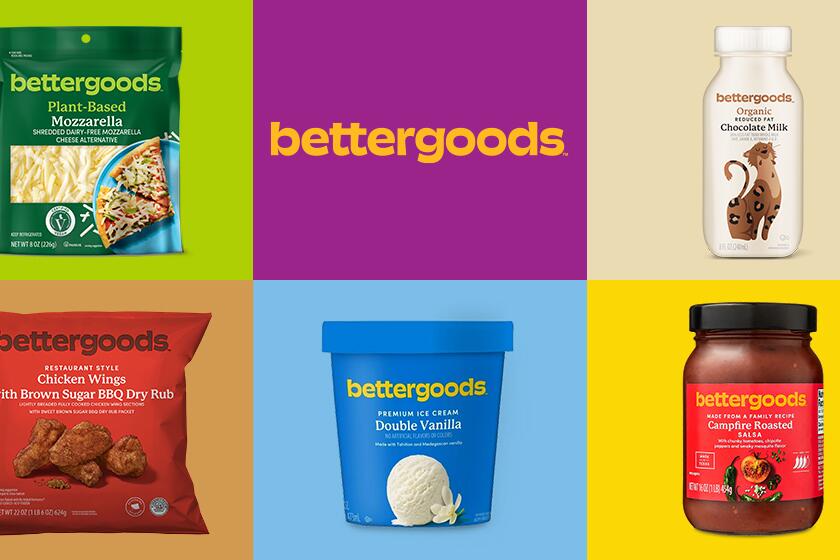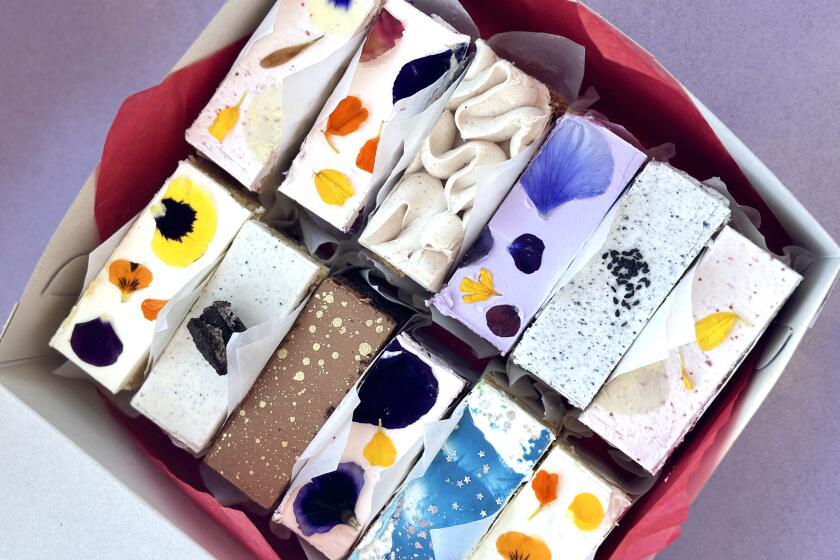The Great Merlot Stampede
A sudden shortage of Merlot grapes in California has growers and wineries in a frenzy, wine merchants scrambling to stock shelves and wholesale companies discussing price increases.
As recently as 1991, Merlot was an insignificant dot in the premium-wine business. Today this red wine cousin of Cabernet Sauvignon has grown to 6% of all premium wines, and sales are still rising rapidly. Growers are racing to convert vineyards from other grape varieties to Merlot, and prices being paid for Merlot grapes and bulk Merlot wine are at all-time highs.
The shortfall has prompted two major wine companies, Kendall-Jackson Winery and E & J Gallo Winery, to offer growers long-term, guaranteed pre-plant contracts for Merlot to meet their needs well into the next decade.
“I’ve been in this business for 12 years and the last six months have been absolute pandemonium,” says David Freed, president of UCC Vineyards Group, a Napa-based company that has acquired vineyards for various limited partnerships.
“At least 20% of [vineyard land in] Napa Valley is in redevelopment, so there’s already a shortage of grapes,” he says. “That’s being compounded by the bad weather, and according to [wine broker] Bill Turrentine, the cushion of bulk wine that wineries could depend on to even out year-to-year variance is gone. I have never heard of so many wineries on allocation in my life.”
Merlot is the grape everyone wants. The California statewide average price paid for Merlot grapes in 1984 was $590 a ton. A decade later, in 1994, that price was $1,104. The Napa Valley average last year was $1,530, and one grower sold a six-ton lot for $2,512 per ton.
*
Napa Valley Chardonnay grapes commanded only $1,269 per ton last year.
Because of the high prices they can demand for Merlot, growers are converting other grapes to Merlot. Rich Kunde, president of Sonoma Grapevines, the country’s largest bench-grafting nursery, says that in 1995 he grafted more than 2.7 million Merlot cuttings for planting this year and next, equivalent to 3,700 acres if all the cuttings grow.
“The market for Merlot is starting to go into a panic situation,” says Kunde. “We are writing Merlot contracts for 1997. I’ve never written contracts that far down the road before. We have a long waiting list of people who want it.”
In 1987, 3,330 acres of Merlot were planted statewide. By 1994, there were 9,605 acres producing a crop and another 8,388 that had been planted but are not yet bearing fruit.
Despite that growth, the total of nearly 18,000 acres of Merlot in California is far short of what experts project will be needed to meet the demand of a public seeking lighter red wines. At least one analyst says Merlot will eventually overtake Cabernet in sales.
In a confidential report issued to clients last August, Turrentine, president of Turrentine Wine Brokerage in San Anselmo, wrote that the most likely scenario regarding Merlot was that it would “continue to mushroom and that Merlot, displacing Cabernet, will be crowned King of Red Wine.”
*
Statewide acreage of Cabernet Sauvignon is listed as just over 36,000. Though Merlot is just half that total, it’s growing fast and is expected to overtake Cabernet soon after the year 2000.
“Merlot is easier to drink than most other red wines,” says Eileen Fredrikson, a partner in Gomberg-Fredrikson & Associates, a San Francisco wine consulting company. “Especially Cabernet, so it will remain hot. And it has the advantage because we already know how to pronounce it.”
As recently as three years ago, good-quality bulk Merlot could be found for $5 a gallon, but the price had risen to $14 to $20 a gallon--or more--by mid-1994.
*
Sales of Merlot rose dramatically soon after the 1991 “60 Minutes” report on the so-called French Paradox. That report pointed out the lower rates of heart disease among the French--even though they have a far fattier diet than most Americans--and attributed it to regular consumption of red wine.
From a very small base in 1991, Merlot sales rose 92% in 1992. In the next two years, growth of the category has been 60% and 45%, to a total in 1994 of 2.8 million cases of Merlot--nearly 6% of the 47.6 million cases of California premium wine.
San Francisco wine consultant Ed Everett, president of New World Wines, is concerned by this explosion. He says growers may get too eager, and plantings may well exceed demand sooner than they realize.
“This [the rush to plant Merlot] reminds me of the classic image of the elephant sprinting and then trying to put on the brakes,” says Everett. “The frenzy is on to plant, and any time there was a planting frenzy in the past, there was also a horrendous backlash at some point.”
For the short term, however, everyone agrees that prices for grapes and wine will rise. However, Turrentine says shelf prices won’t rise too high too soon because wineries are protective of their share of the market, and competition in the form of imports is lurking.
Turrentine says U.S. wineries fear losing shelf space to Merlot from Eastern Europe, Chile, Australia and South Africa. Already, wines from Romania (one brand is called Premiat), Bulgaria (Trakia) and Hungary (Duna) are here, and literally two dozen brands from Chile now represent good value in Merlot as well as Cabernet, Chardonnay and Sauvignon Blanc.
(BEGIN TEXT OF INFOBOX / INFOGRAPHIC)
Merlot on the Move
Merlot, which was not even considered a separate varietal in 1991, accounted for 6% of all premium wine sales in the United States in 1994. And it’s still booming.
1991 (37.7 million cases)
White Zinfandel: 30%
Chardonnay: 27%
Cabernet Sauvignon: 13%
Sauvignon Blanc: 11%
White Grenache: 10%
All other varietals: 9%
1994 (47.5 million cases)
Chardonnay: 38%
Premium Blush: 21%
Cabernet Sauvignon: 18%
Sauvignon Blanc: 10%
All other varietals: 7%
Merlot: 6%
(BEGIN TEXT OF INFOBOX / INFOGRAPHIC)
Wine of the Week
1992 Domaine de Boissan, Le Montsegur, “Cuvee Speciale,” Co^tes du Ventoux, Christian Bonfils ($7)-- Peter Mahan is import specialist for Wine Warehouse, a Los Angeles-based wholesale company, and his job is to ferret out good wines from unknown producers and import them. In the last decade, Mahan has found more than 100 wines, mostly from France, that I have felt were good values. This may well be the best bargain of all.
The aroma of this relatively dark red wine is spiced with pepper and sandalwood, and the fruit is deep and rich, though the tannins are not hard. There is a lot of wine for the money here.
Co^tes de Ventoux is a lesser-known region in the eastern Rhone Valley that often produces good value red wines. They are generally lighter in weight than wines from the warmer Co^te du Rhone. The Grenache grape dominates many Co^tes du Ventoux wines; here the blend is 80% Grenache, 20% of the darker Syrah.
Mahan visited Domaine de Boissan two years ago and discovered, still in barrels, wines off a seven-acre parcel of land Bonfils had just bought. The land was planted with very old vines that make a weighty wine. Mahan and Bonfils spent hours doing blending tastings before making the final wine, which includes about 25% of barrel-aged Gigondas for a beefier texture.
Boissan also makes a richer and deeper-scented, weightier Co^tes du Rhone called Clos Fontvive. At $8.50 it is also a good value. But I prefer the Co^tes du Ventoux, which isn’t as widely known and so can’t command a higher price. Its long name shouldn’t daunt you, though. Just ask for it by its proprietary name, Montsegur. Available mainly in fine wine shops and restaurants, it’s occasionally discounted to $5.99.
More to Read
Eat your way across L.A.
Get our weekly Tasting Notes newsletter for reviews, news and more.
You may occasionally receive promotional content from the Los Angeles Times.






